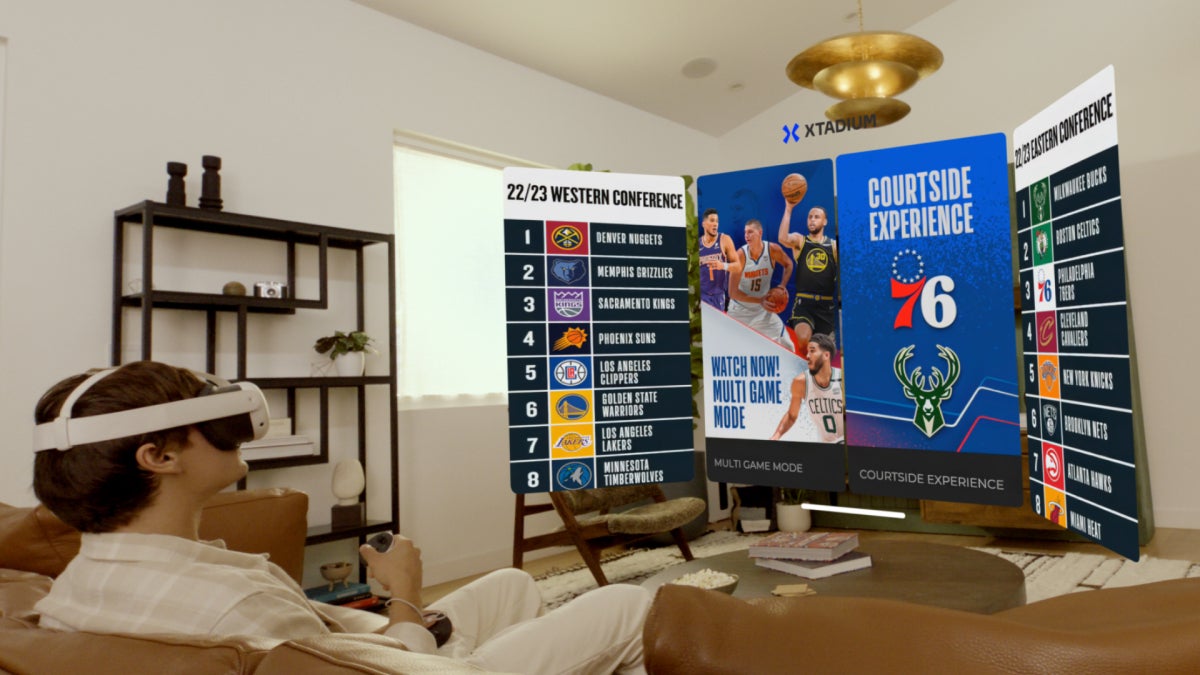
Visualisation technologies like data displays, digital twins, augmented reality (AR) and virtual reality (VR) increase the engagement levels of fans watching sport and boost revenues as a result, a new report outlines.
GlobalData’s The Future of Work in Sport report contends that engaging fans is critical to the success of clubs, broadcasters, and sponsors through providing opportunities for monetisation. It explains: “Engaged fans are more likely to watch games, buy merchandise and shop with team sponsors, which ultimately boosts vendor revenues.”
For this reason, the report suggests that vendors should find ways to engage fans all year round. It also notes that consumer habits in sport are changing and that visualisation is offering sports broadcasters new ways to engage fans.
“Vendors are increasingly adapting their styles to appeal to younger generations,” it explains. “Gen Z, which refers to those born between 1997 and 2012, is characterised by their infatuation with digital and social media. According to a 2023 Deloitte survey, nearly all Gen Z fans are using social media to consume sports-related content, and around 80% of them follow an athlete on social media. An increased following allows the athlete to build their brand, which could lead to greater fan engagement and a higher viewership for the games they are involved in.”
Visualisation technologies
The report notes that Gen Z has a huge choice over what to watch and is more interested in shorter “snackable” content than other generations. As such, it notes the importance of providing short-form highlight videos and strong social media content to engage fans and prospective fans.

US Tariffs are shifting - will you react or anticipate?
Don’t let policy changes catch you off guard. Stay proactive with real-time data and expert analysis.
By GlobalDataAcross generations, there is an appetite for streaming video-on-demand services that enhance the game, with around half wanting a more interactive viewing experience. AR and VR are two technologies that can help to offer this.
“AR in broadcasting creates more engaging and insightful sports analysis,” the report says. “AR on personal devices is an interesting marketing device, providing unique fan experiences that encourage social sharing and can generate viral social media moments. AR in broadcasting is more mature and is already established in several sports events, such as the AR-generated line of scrimmage in the NFL, which adjusts as players make gains. However, as media rights and competition intensify, enhanced AR broadcasting experiences become more attractive to broadcasters. Real-time statistics overlayed on-screen by AR graphics can create a more informative and enjoyable viewing experience.”
The report says that the use of AR in broadcasting is becoming more common and is now a necessity for high-quality viewing experiences. It adds that using AR in combination with AI can allow for customisable, real-time betting odds to be overlaid on screen, allowing viewers to make bets during the broadcast.
“Alongside AR, VR can also allow sports federations to increase engagement, though it currently stands with less potential than AR,” the report adds. “Sporting federations have experimented with VR headsets, yet the market remains niche.”
It gives the example of the 2024-25 NBA season, during which Meta has provided VR access to over 50 live NBA games – but only five in 180-degree monoscopic view.
The report adds: “Furthermore, according to a 2023 Deloitte survey, only 5% of sports fans had used VR to consume sports experience in the past year. Despite this current state, there is certainly keen interest in VR experiences; when presented with a list of six different sports-related VR experiences, roughly 70% of Gen Z and millennial fans were interested in at least one.”



